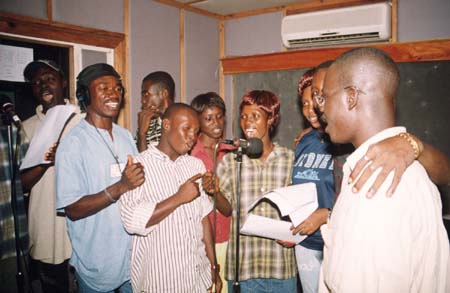|
Droopy
Droopy is an animated character from the golden age of American animation. He is an anthropomorphic white Basset Hound with a droopy face. He was created in 1943 by Tex Avery for theatrical cartoon shorts produced by the Metro-Goldwyn-Mayer cartoon studio. Essentially the polar opposite of Avery's other MGM character, the loud and wacky Screwy Squirrel, Droopy moves slowly and lethargically, speaks in a jowly monotone voice, and—though hardly an imposing character—is shrewd enough to outwit his enemies. When finally roused to anger, often by a bad guy laughing heartily at him, Droopy is capable of beating adversaries many times his size with a comical thrashing. The character first appeared, nameless, in Avery's 1943 cartoon ''Dumb-Hounded''. Though he was not called "Droopy" onscreen until his fifth cartoon, ''Señor Droopy'' (1949), the character was already named "Droopy" in model sheets for his first cartoon. He was officially first labeled "Happy Hound", a name used in th ... [...More Info...] [...Related Items...] OR: [Wikipedia] [Google] [Baidu] [Amazon] |
Metro-Goldwyn-Mayer Cartoon Studio
The Metro-Goldwyn-Mayer cartoon studio (also commonly referred to as MGM Cartoons) was an American animation studio operated by Metro-Goldwyn-Mayer during the Golden Age of American animation. Active from 1937 until 1957, the studio was responsible for producing animated shorts to accompany MGM feature films in Loew's Theaters, which included popular cartoon characters '' Tom'', '' Jerry'', ''Droopy'', '' Butch'', '' Spike'', '' Tyke'', and '' Barney Bear''. Prior to forming its own cartoon studio, MGM released the work of independent animation producer Ub Iwerks, and later the '' Happy Harmonies'' series from Hugh Harman and Rudolf Ising. The MGM cartoon studio was founded to replace Harman and Ising, although both men eventually became employees of the studio. After a slow start, the studio began to take off in 1940 after its short '' The Milky Way'' became the first non-Disney cartoon to win the Academy Award for Best Short Subjects: Cartoons. The studio's roster of talent ... [...More Info...] [...Related Items...] OR: [Wikipedia] [Google] [Baidu] [Amazon] |
Voice Actors
Voice acting is the art of Acting, performing a character or providing information to an audience with one's voice. Performers are often called voice actors/actresses in addition to other names. Examples of voice work include animation, animated, off-stage, off-screen, or non-visible characters in various works such as films, dubbing, dubbed foreign films, anime, television shows, video games, cartoons, Documentary film, documentaries, commercials, audiobooks, radio dramas and Radio comedy, comedies, amusement rides, theater productions, puppet shows, and audio games. The role of a voice actor may involve singing, most often when playing a fictional character, although a separate performer is sometimes enlisted as the character's singing voice. A voice actor may also simultaneously undertake motion-capture acting. Non-fictional voice acting is heard through pre-recorded and automated announcements that are a part of everyday modern life in areas such as stores, elevators, waiting r ... [...More Info...] [...Related Items...] OR: [Wikipedia] [Google] [Baidu] [Amazon] |
Tortoise Beats Hare
''Tortoise Beats Hare'' is a ''Merrie Melodies'' short film directed by Tex Avery and released on March 15, 1941. The short, loosely based on Aesop's fable ''The Tortoise and the Hare,'' stars Bugs Bunny and, in his first appearance, Cecil Turtle Cecil Turtle is a fictional character in the Warner Bros. ''Looney Tunes'' and '' Merrie Melodies'' series of films. Though he made only three theatrical appearances, Cecil has the unusual distinction that he is one of the very few characters who .... Plot Bugs Bunny munches away on a carrot while perusing the opening film credits, albeit with comical mispronunciations. Expressing disdain upon encountering the title of the cartoon, Bugs embarks on a furious tirade, dismantling the credits in a fit of frustration. His attention soon turns to Cecil Turtle, with whom he enters into a high-stakes wager of ten dollars on a race (). Cecil, employing cunning strategy, enlists the aid of his turtle cousins to impersonate him at various points ... [...More Info...] [...Related Items...] OR: [Wikipedia] [Google] [Baidu] [Amazon] |
Merrie Melodies
''Merrie Melodies'' is an American animated comedy short film series distributed by Warner Bros. Pictures. It was part of the ''Looney Tunes'' franchise and featured many of the same characters. Originally running from August 2, 1931, to September 20, 1969 (during the golden age of American animation), it was revived in 1979 with new shorts being sporadically released until June 13, 1997. ''Merrie Melodies'' originally placed emphasis on one-shot color films in comparison to the black-and-white ''Looney Tunes'' films. After Bugs Bunny became the breakout character of ''Merrie Melodies'' and ''Looney Tunes'' transitioned to color production in the early 1940s, the two series gradually lost their distinctions and shorts were assigned to each series randomly. ''Merrie Melodies'' was originally produced by Harman–Ising Pictures from 1931 to 1933 and Leon Schlesinger Productions from 1933 to 1944. Schlesinger sold his studio to Warner Bros. in 1944, and the newly renamed Warner ... [...More Info...] [...Related Items...] OR: [Wikipedia] [Google] [Baidu] [Amazon] |
